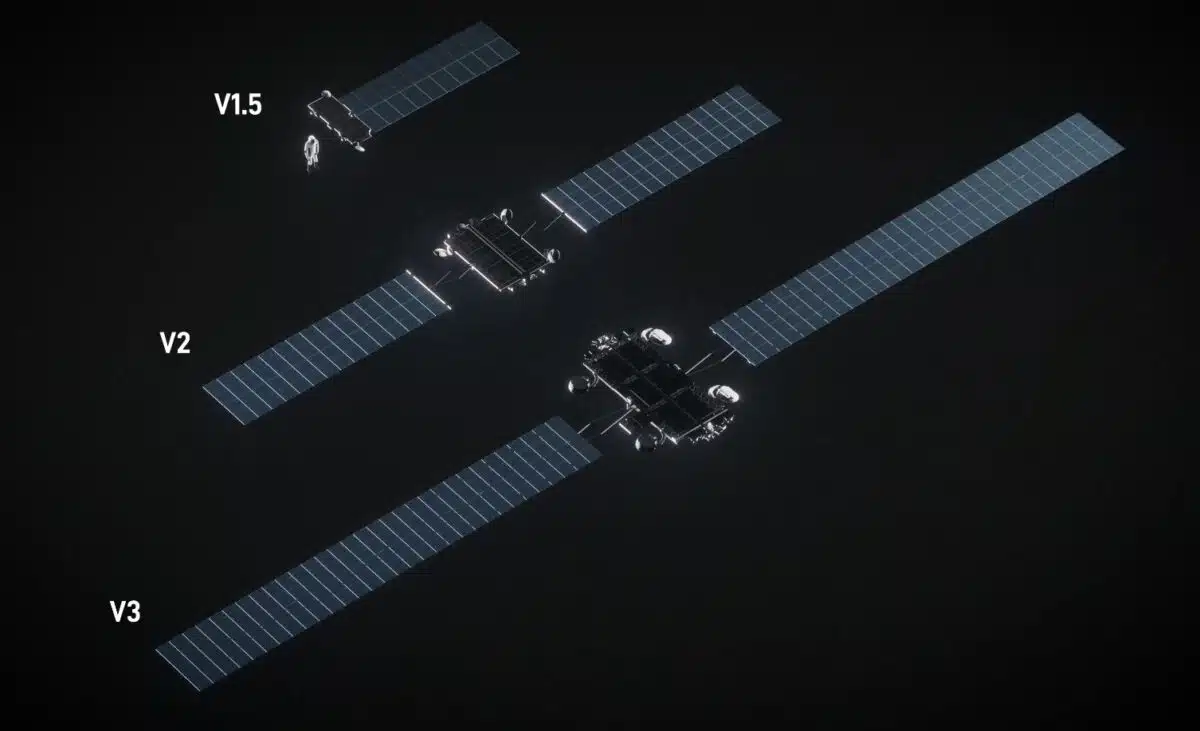SpaceX has confirmed plans to build data centers in orbit, using its upcoming fleet of Starlink V3 satellites, according to Elon Musk. The idea, once speculative, now seems to be firming up, as the company prepares to scale satellite capacity far beyond what’s currently flying in low Earth orbit.
Today, massive data centers are grounded in giant warehouses on Earth, but in a few years, some of that storage and processing could be happening hundreds of kilometers above us. Space is no longer just for communication and Earth observation, it’s quietly becoming a place where actual computing work might get done.
Bigger, Faster, And More Powerful Satellites
The leap in capability between Starlink generations is striking. The current Starlink V2 mini satellites deliver about 100 Gbps of downlink capacity, which is already more than enough for basic connectivity services. But the next iteration, Starlink V3, is expected to hit 1 Tbps, a tenfold jump.
To put that into perspective, Viasat-3, a large geostationary satellite with similar capacity, took nearly a decade to develop and cost hundreds of millions of dollars. SpaceX plans to launch dozens of V3 units in a single go. According to Caleb Henry of Quilty Space:
there’s simply “nothing else in the rest of the satellite industry that comes close to that amount of capacity.”
And when you consider that the original Starlink satellites, launched just a few years ago, weighed around 300 kg with 15 Gbps of throughput, the pace of progress starts to feel a little dizzying. The real potential lies in what can be done with all that bandwidth, especially if the satellites themselves start acting more like computing nodes than just relays.
 The upcoming Starlink V3 satellites will be significantly larger than the earlier versions. Credit: SpaceX
The upcoming Starlink V3 satellites will be significantly larger than the earlier versions. Credit: SpaceX
Momentum From The Ground—and In Orbit
According to Henry, the growing interest from large tech firms “is very much worth paying attention to.” These aren’t vague hypotheticals, if major cloud players begin investing in off-planet infrastructure, the entire concept of where data resides could shift.
Satellites already handle a fair amount of data. Imaging constellations, for instance, routinely store massive datasets until they pass over ground stations. Some newer satellites can even process information onboard, compressing or filtering it before transmission. But a full-fledged orbital data center would go further—storing, processing, and potentially routing data autonomously in space. That’s a very different role than simply relaying signals back to Earth.
Still, the trajectory seems clear: as satellites become more capable and launch costs keep falling, orbit is starting to look like a viable place for more than just data transit.
NEWS: SpaceX will build data centers in space 🤯
Elon Musk: “Simply scaling up Starlink V3 satellites, which have high speed laser links would work. SpaceX will be doing this.”
Starlink V3 satellites are a step up from previous models—weighing around 1,500 kg each, with a… https://t.co/DIDDTUjRgD pic.twitter.com/hMPg1dp0k4
— Ask Perplexity (@AskPerplexity) October 31, 2025
Elon Musk’s Starship Scales Space
The real enabler behind all of this might be Starship, SpaceX’s reusable heavy-lift rocket. Still in development, the vehicle has already carried out several suborbital and test flights. More recently, it’s begun testing a satellite deployment mechanism, indicating that the company is actively preparing for large-scale Starlink launches.
What’s notable is the expected scale: about 60 Starlink V3 satellites per Starship flight. That’s not a trickle—that’s a pipeline. According to Ars Technica, these launches could begin as soon as 2026, meaning the groundwork is already being laid. With each V3 satellite weighing around 1,500 kg, the infrastructure going into orbit is no longer small, experimental hardware, it’s industrial-grade.
Starship’s potential to deliver high-capacity hardware at volume gives SpaceX a unique advantage. Not only can they build the satellites themselves, but they can also launch them without relying on outside providers. That level of control is rare in the space sector, and it’s one reason why ideas like orbital data centers, ambitious as they are, might actually get off the ground.

